On August 1, 2008, the first high-speed railway line from Beijing to Tianjin, 117km long, officially opened to traffic. Passenger trains are allowed to run at 350km/h on a 1,435m gauge.
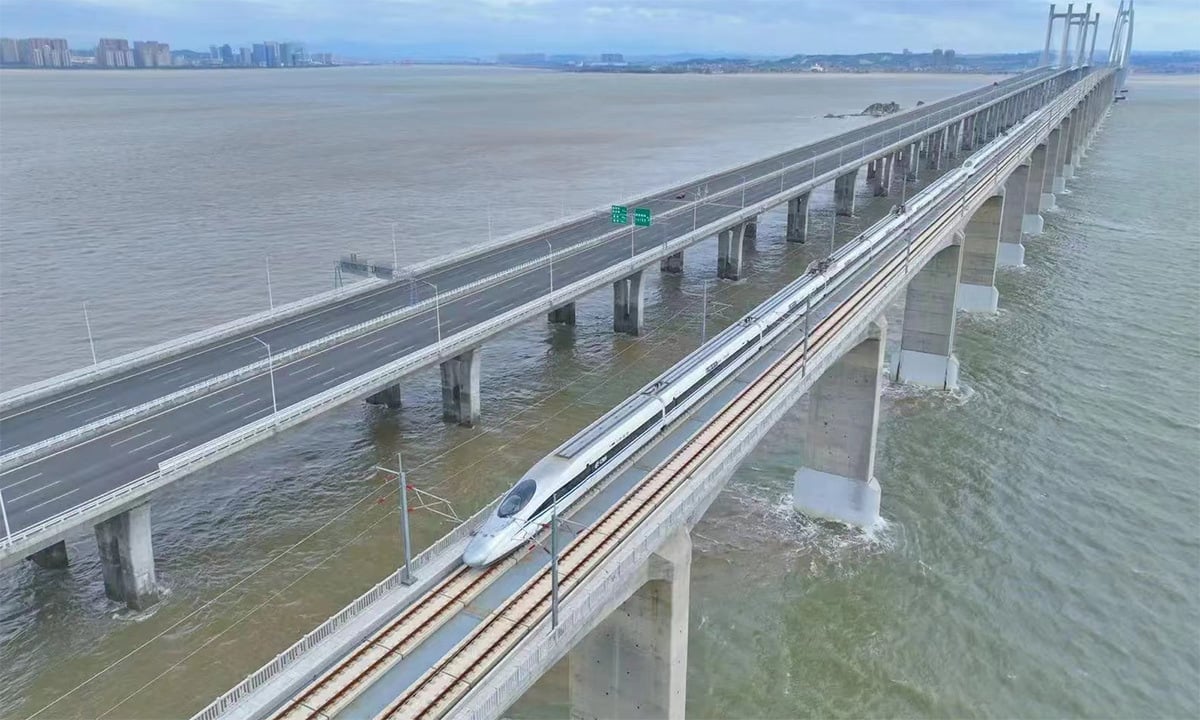
High-speed railway on Quanzhou Bay Cross-Sea Bridge - Photo: CHINA STATE RAILWAY GROUP CO., LTD
When telling about China's journey of developing high-speed railways in such a short time that it has achieved such great results that it has astonished the world, the people of this country often start with a vivid story: In October 1978, Mr. Deng Xiaoping visited Japan. Despite his busy and complicated political schedule, he still took the time to ride the Japanese Shinkansen high-speed train and did not hide his admiration for the train's speed.
Slow start
In the book China Speed - The Development of High-Speed Rail , researcher Wang Xiong recounted this story: Leader Deng Xiaoping said this was his first experience with this Japanese means of transport.
"It runs very fast, runs as fast as the wind. It feels like it urges us to run" - Mr. Deng Xiaoping did not hesitate to say good words about the early successful development of Japan's high-speed railway, while in 1978, China's traditional railway was still very slow with an average speed of less than 80km/h.
Following the milestone of Deng Xiaoping's visit to Japan, the second milestone in China's high-speed rail development history followed just two months later when the country held the plenary session of the 11th Party Central Committee. Among the economic development discussions, the issue of building high-speed rail for China was brought up for discussion.
Of course, these innovations, like many other countries, always have supporters and opponents. Supporters assert that the high-speed rail system will contribute to China's economic development.
Meanwhile, the opposition group said that investing in this modern means of transport is too costly in a situation where China needs to focus its financial resources on developing its industries.
This counter-argument is also the main content that anti-high-speed rail groups around the world argue, even in Japan, there are many opinions that it was too costly and ineffective when the country first started building the Shinkansen high-speed train system in the 1960s.
Then, China spent a long time on research. By 1990, a report proposing the construction of high-speed railways was submitted to the Chinese Government in the reality that this populous country's economy had begun to enter a period of rapid development, at the same time the overload situation was severe on the old railway lines and highways.
In 1995, Prime Minister Li Peng affirmed that the construction of the Beijing-Shanghai high-speed railway would be implemented in the 9th Five-Year Plan (1996-2000).
However, the project could not become a reality until the first decade of the 21st century - a time when five countries in the world had successfully developed high-speed railways: Japan, Spain, France, Germany, and South Korea.
Looking back at these timelines, it can be affirmed that China was slow in starting to build high-speed railways, five decades behind Japan and even slower than South Korea, its neighboring countries.
"Go late, come back early"
However, when the projects began to be implemented, the Chinese surprised the world with their working speed and the great achievements they reaped in such a short time.
In 2004 (when South Korea opened its first high-speed railway line, the Korea Train Express, with a speed of over 300km/h from Seoul to Busan), China selected four of the world's leading technology companies, Alstom (France), Siemens (Germany), Bombardier (Canada) and Kawasaki Heavy Industries (Japan), to sign technology transfer contracts with its two major state-owned companies, China Southern Railway Corp and China Northern Railway Corp.
It can be said that China has calculated correctly when choosing several partners to avoid being exclusively dependent on one side, while at the same time they can receive technological achievements from developed countries to develop their own technology.
With its huge market position, China can make these demands on its international partners. In fact, they have successfully applied this diversified cooperation to many other industries, not just high-speed rail.
In particular, as a country that is behind in high-speed transportation, China also has the conditions to consider which modern type to choose: conventional high-speed railway with a speed of more than 300km/h as Japan, France, Spain, and South Korea have implemented, or the magnetic levitation train (Maglev) that Germany is developing, which has a higher speed, is smoother, but the investment cost is also much more expensive.
After much research and discussion, they finally chose conventional high-speed rail (HSR) technology projects and quickly started implementing them.
On August 1, 2008, the first high-speed railway line from Beijing to Tianjin, 117km long, officially opened to traffic. Passenger trains are allowed to run at 350km/h on a 1,435m gauge.
The era of China's high-speed trains begins…
After that, a series of high-speed railway projects in this country were invested in at an unprecedented speed (in contrast to the previous slow research and preparation phase).
In June 2011, the 1,318km high-speed railway from Beijing through seven eastern provinces to Shanghai officially began operation.
With a total investment of 220.9 billion yuan, this railway uses self-propelled trains with a top speed of 380 km/h. At this point, the Chinese can be proud of their high-speed means of transport.
After 15 years, by the end of 2023, the total length of high-speed rail lines in China's railway network has been completed, reaching more than 42,000km. However, China's railway stations have not stopped. They are working hard to continue to have 50,000km of high-speed rail by 2025 and 200,000km by 2035 as planned.
By 2024, high-speed rail will connect more than 75% of Chinese cities with populations of 500,000 or more. The high demand for travel in a populous country gives China even more incentive to invest in its high-speed rail infrastructure and new technologies.
In 2015 alone, the country invested $125 billion in modern transportation. In November 2018, they announced a massive $586 billion economic stimulus package, a large portion of which was earmarked for high-speed rail development.
Another special thing is that China's conditions also give them the ability to build these routes, often cheaper than other countries. B1M data released in 2021 shows that China invests about 17 million USD for 1 km of high-speed rail, while in Europe it is about 25 - 39 million USD, and in the US about 56 million USD.
Among the countries exporting railway technology to the world, China is listed alongside countries like Japan, France, Korea, Spain, etc.
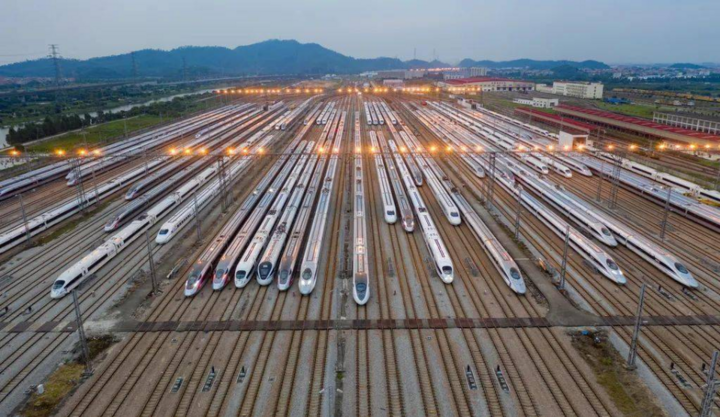
China's high-speed railway is developing very rapidly - Photo: SOHU
The "secret" of China's high-speed railway "going after the enemy"
- With a huge population and many densely populated cities, China's high-speed rail industry has the conditions to profit and develop strongly both now and in the future.
- The "midwife" role of the government is also very important. The Chinese state budget has provided nearly 60% of the total infrastructure investment capital since the mid-2000s when high-speed rail construction began.
- Compensation and clearance to make way for road construction in China is also faster than in many other countries, while this is a very difficult and time-consuming problem for other countries.
- From being a partner with developed countries, China has quickly mastered its own high-speed rail technology. Completely no longer dependent on any country, they can also export technology and equipment.
__________________________________________________________
A modern bullet train was whizzing through the peaceful countryside at 200km/h. The journey ended abruptly in horror. Even the most advanced technology can have catastrophic consequences.
Next : Horrific disaster from high-speed train
Source: https://tuoitre.vn/the-gioi-lam-duong-sat-toc-do-cao-ra-sao-ky-8-bi-quyet-phat-trien-duong-sat-cao-toc-trung-quoc-20241029215430827.htm



![[Photo] General Secretary To Lam visits Kieng Sang Kindergarten and the classroom named after Uncle Ho](https://vphoto.vietnam.vn/thumb/1200x675/vietnam/resource/IMAGE/2025/10/09/1760023999336_vna-potal-tong-bi-thu-to-lam-tham-truong-mau-giao-kieng-sang-va-lop-hoc-mang-ten-bac-ho-8328675-277-jpg.webp)

![[Photo] President Luong Cuong attends the 80th Anniversary of the Traditional Day of Vietnamese Lawyers](https://vphoto.vietnam.vn/thumb/1200x675/vietnam/resource/IMAGE/2025/10/09/1760026998213_ndo_br_1-jpg.webp)





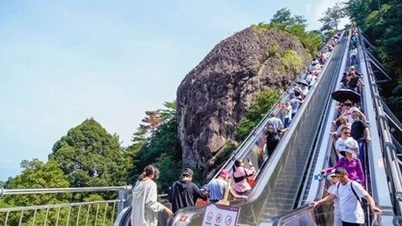

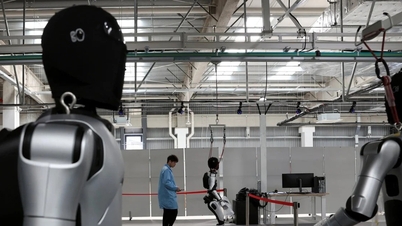
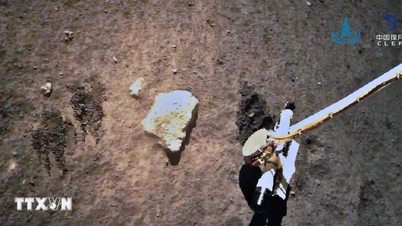









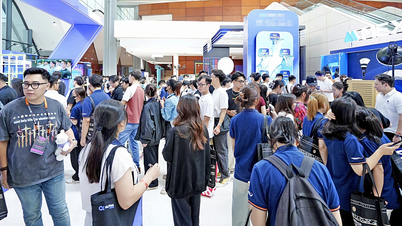



































![[VIDEO] AI version of BSR General Director Nguyen Viet Thang: From the mission of energy shield to the desire to contribute](https://vphoto.vietnam.vn/thumb/402x226/vietnam/resource/IMAGE/2025/10/10/1760062415027_0000371c-f2a1-31a0-38a9-e3de0ece2bbd.jpeg)



















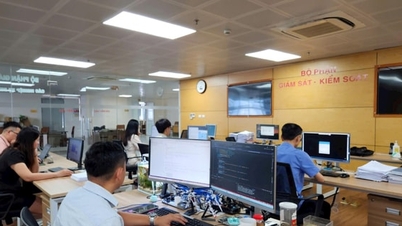























Comment (0)